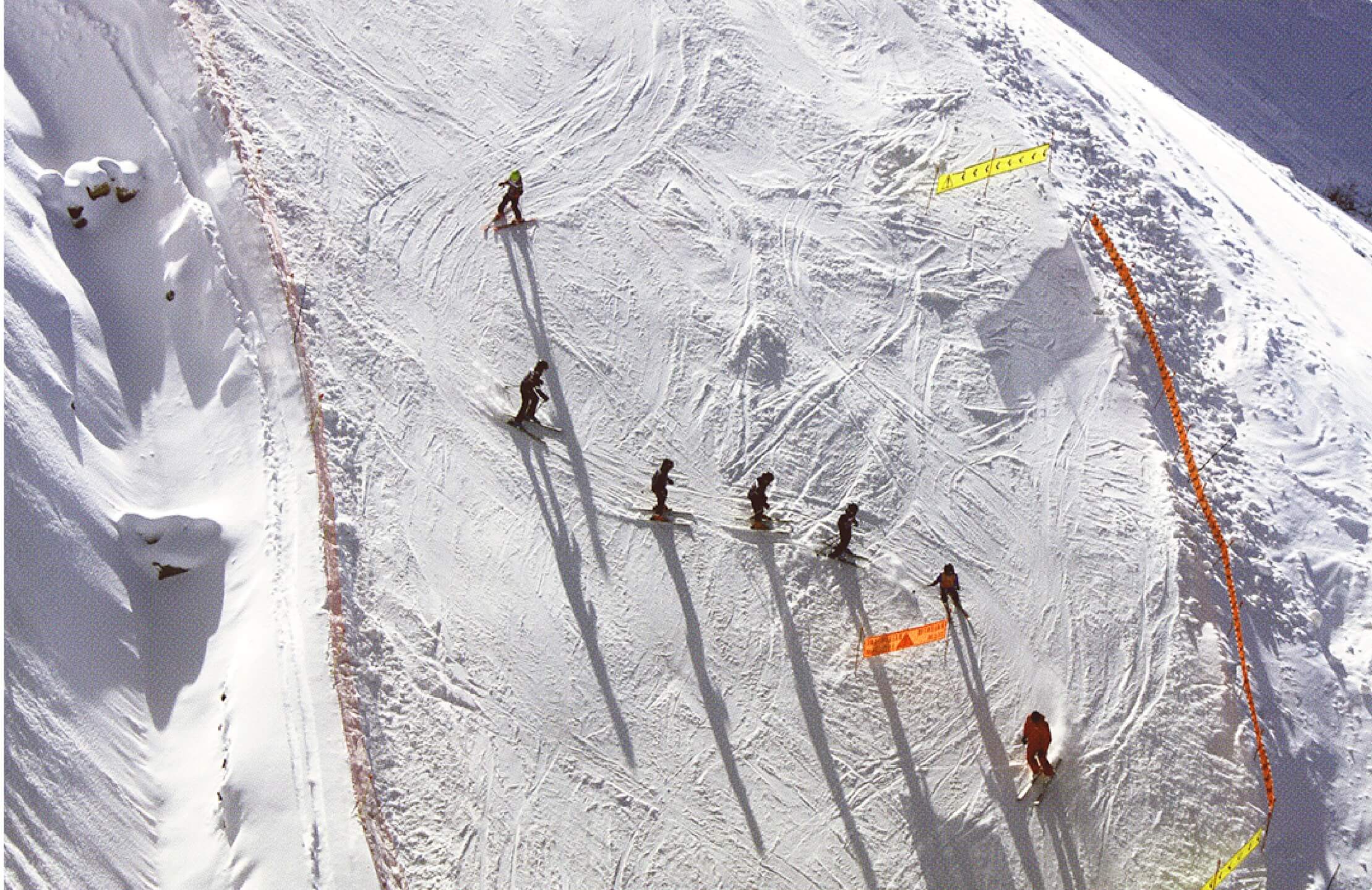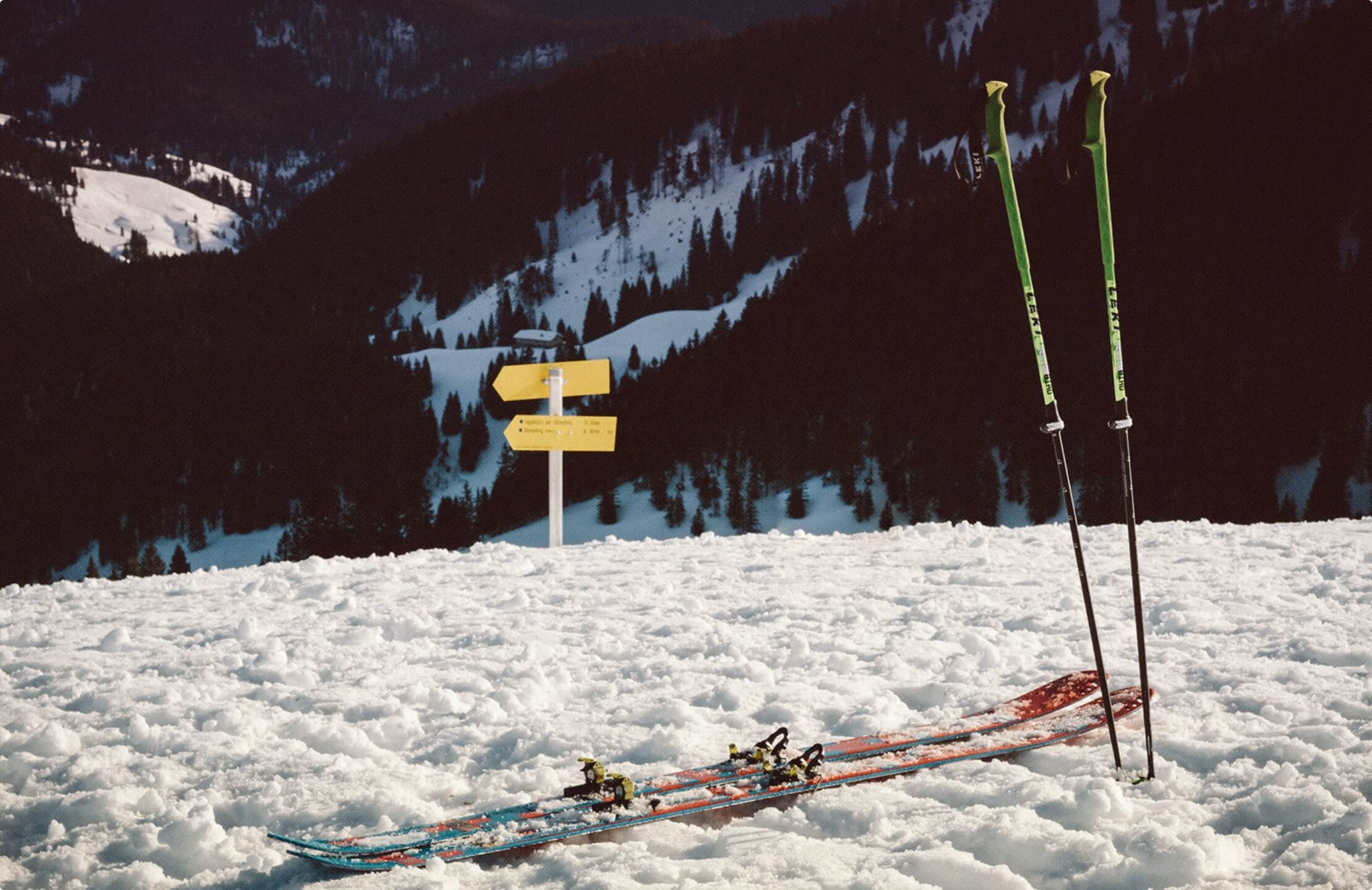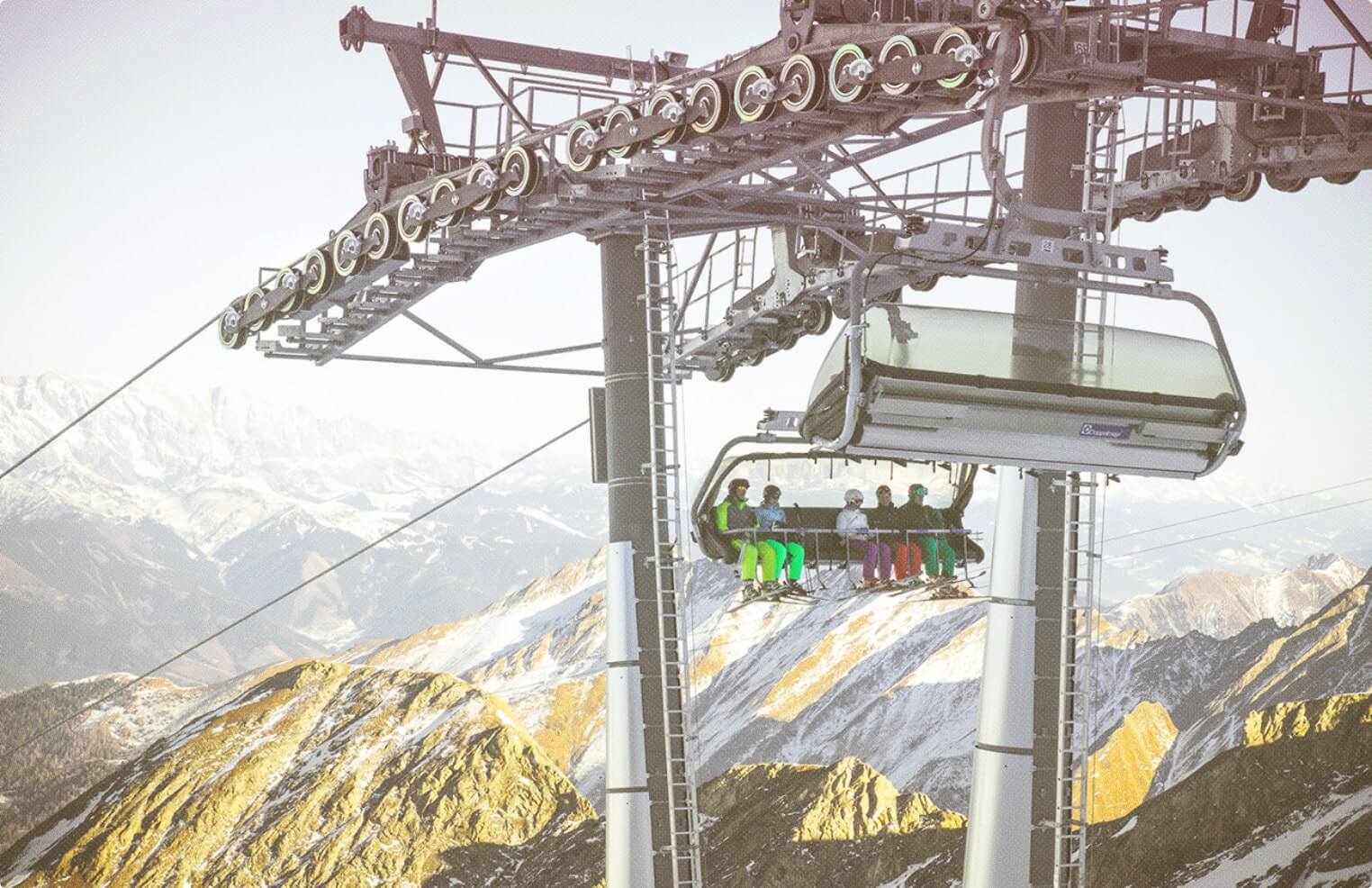
Training & Lessons
If you’re new to winter sports, you’ll want to prepare. Getting lessons from a professional is the best way to do this. While they aren’t always cheap, these lessons can prove invaluable for first-timers.
Ski Lessons
It’s not as easy as throwing on a pair of skis and gliding down a mountain. Heading off unprepared puts both you and other people on the mountain at risk. For that reason, it’s probably best you book out lessons with a professional instructor.
While you may be tempted to learn from friends and family (or simply as you go), there are a number of benefits to using a qualified teacher. These include:
The importance of the basics.
If somebody neglects to master the basics of any sport, they’re going to have an erratic (and probably incorrect) style for the rest of their life. Understanding all the appropriate techniques from day one sets you in good stead for a comfortable, traditional and, most importantly, safe approach to winter sports.

Learning on the right slopes
Instructors know which slopes are right for newcomers. Whereas your friends might want to tackle harder routes, a teacher will start you off within your own comfort zone. Tackling a route which you’re not capable of skiing or snowboarding is one of the most dangerous things you can do as a beginner. The presence of a professional helps prevent that.
Instructors push harder.
That said, it’s no easy ride either. While a friend might take it easy on you if you’re struggling, it’s a teacher’s job to get the best results possible. For that reason, they’re far more likely to encourage you to soldier on and achieve your goals in a much quicker timeframe.
Learning how to use the ski lift.
Scoff if you like, but we’ve all seen the videos of people miserably failing to properly get on and off a ski lift. There’s a surprising amount of them. Save yourself the embarrassment by having this skill taught to you from the beginning of your time on the snow. Yes, most instructors do include this in their lessons.
The price of lessons will naturally vary depending on where you go. Prices for a day’s intensive course can reach up to £129, whereas an hour will likely set you back around £30-40. Again, this will change according to the teacher or skiing school.

Basic techniques for first-time skiers
As we mentioned, one of the main benefits of using an instructor is mastering the basics of skiing. Understanding how to properly control yourself is arguably the most important factor in ski safety. The inability to stop can be disastrous.
There are four core techniques which every skier should perfect before they tackle the slopes on their own.
Starting.
It sounds trivial, but learning how to properly start is important for any first time skier. It’s not so much picking up momentum (the slope will do that for you), but rather how to begin the process which will propel you forward.
You move your legs close together (without the skis touching), with your feet pointing forwards. This is sometimes dubbed the ‘”French Fry” by skiing enthusiasts owing to the shape your feet make.
Stopping.
And where there are french fries, pizza isn’t far to follow. Moving your heels apart, but keeping your toes pointed close towards each other, creates a triangle shape similar to the carb-heavy snack. More importantly, this positioning of your body also halts your forward momentum in a comfortably gradual manner.
Leaning forwards.
It’s very tempting to pull away and lean backwards when you’re moving at (what feels like) breakneck speeds down a mountain. While it might go somewhat against your basic instincts, it’s important to lean into your skis. This gives you both more balance and control. Leaning back causes your skis to come off the ground, resulting in a much higher likelihood of you crashing.
Turning.
To turn, you need to shift your entire body weight onto the leg which corresponds with the direction you want to move in. So, if that’s to the left, lean forwards and have your left leg absorb all the pressure. This will see you slowly glide in your intended direction.
Once you’ve got to grips with the basics, skiing becomes a lot more manageable. Without these first steps, you’re setting yourself up for potential disaster.
